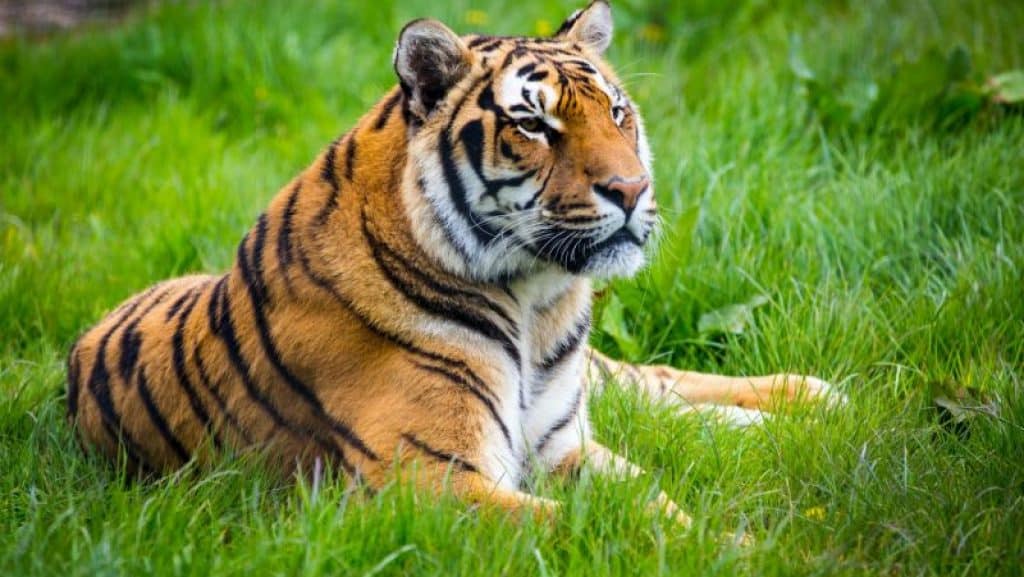About Nauradehi Wildlife Sanctuary:
- Location: It covers nearly 1197 km² area across three districts, i.e. Sagar, Damoh and Narsinghpur, of Madhya Pradesh.
- It is the largest wildlife sanctuary in Madhya Pradesh.
- The entire Sanctuary is situated on a plateau, forming part of the upper Vindhyan range and has a connecting forest patch with Veerangana Durgawati Sanctuary in Damoh district towards the east, which extends up to Bandhavgarh National Park.
- The Sanctuary is classified under Deccan peninsula biogeographic region.
- Three fourth of sanctuary falls in the Yamuna, and one-fourth of the sanctuary falls in the Naramada basin.
- Wildlife Corridor: It acts as a corridor for Panna Tiger Reserve and Satpura Tiger Reserve while indirectly connecting Bandhavgarh Tiger Reserve via Rani Durgawati Wildlife Sanctuary.
- Vegetation: Dry deciduous type
- Flora: The chief floral elements include Teak, Saja, Dhaora, Bhirra, Ber, Amla etc.
- Fauna: The chief faunal element includes Nilgai, Chinkara, Chital, Sambhar, Black Buck, Barking deer, Commom Langur Rhesus Macaque, Fresh water Turtles, Spotted Grey Creeper, Cranes, Egrets, Lapwings etc.
About Durgavati Wildlife Sanctuary:
- Location: Rani Durgavati Wildlife Sanctuary is located in the Damoh district of Madhya Pradesh.
- It is named after Rani Durgavati, a queen of the Gond people.
- The sanctuary was notified by the Government of Madhya Pradesh in 1996.
- The Singorgarh Fort is located within the sanctuary
- Vegetation: The vegetation is predominantly tropical mixed dry deciduous forest.
- Flora: Pterocarpus marsupium, Terminalia alata, Anogeissus latifolia, Madhuca indica, Butea monosperma, and Lagerstroemia parviflora are the most common trees in the sanctuary.
- Fauna:
- It hosts 18 species of mammals, including the leopard, wolf, jackal, Indian fox, striped hyena, and sloth bear.
- Besides these, the sanctuary is also home to 177 species of birds, 16 species of fish and reptiles, and 10 species of amphibians.
Q1) What is a Wildlife Sanctuary?
A Wildlife Sanctuary can be termed as a large geographical piece of land, usually forested, where animals are kept in their natural habitats. The primary purpose of designating areas as a Wildlife Sanctuary is to provide a shelter or refuge to the animals so that they can live and thrive in their natural homes.
Source: MP govt to club Nauradehi & Durgavati sanctuaries to create state’s 7th tiger reserve
Last updated on December, 2025
→ Check out the latest UPSC Syllabus 2026 here.
→ Join Vajiram & Ravi’s Interview Guidance Programme for expert help to crack your final UPSC stage.
→ UPSC Mains Result 2025 is now out.
→ UPSC Notification 2026 is scheduled to be released on January 14, 2026.
→ UPSC Calendar 2026 is released on 15th May, 2025.
→ The UPSC Vacancy 2025 were released 1129, out of which 979 were for UPSC CSE and remaining 150 are for UPSC IFoS.
→ UPSC Prelims 2026 will be conducted on 24th May, 2026 & UPSC Mains 2026 will be conducted on 21st August 2026.
→ The UPSC Selection Process is of 3 stages-Prelims, Mains and Interview.
→ UPSC Result 2024 is released with latest UPSC Marksheet 2024. Check Now!
→ UPSC Prelims Result 2025 is out now for the CSE held on 25 May 2025.
→ UPSC Toppers List 2024 is released now. Shakti Dubey is UPSC AIR 1 2024 Topper.
→ UPSC Prelims Question Paper 2025 and Unofficial Prelims Answer Key 2025 are available now.
→ UPSC Mains Question Paper 2025 is out for Essay, GS 1, 2, 3 & GS 4.
→ UPSC Mains Indian Language Question Paper 2025 is now out.
→ UPSC Mains Optional Question Paper 2025 is now out.
→ Also check Best IAS Coaching in Delhi

















